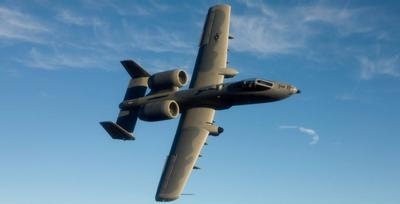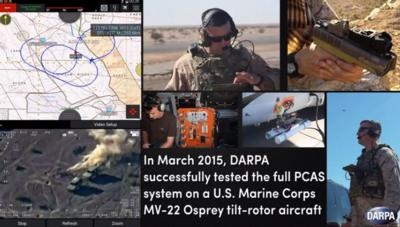Testing Suggest Technology Can Provide Unprecedented Synchronized Understanding Of The Active Battlefield
DARPA recently demonstrated its Persistent Close Air Support (PCAS) prototype system on an A-10 Thunderbolt II attack aircraft, marking the system’s debut on a U.S. Air Force platform. The tests, which involved 50 successful sorties near Nellis Air Force Base in Nevada, showed that a warfighter serving as a joint terminal attack controller (JTAC) on the ground could, in seamless coordination with a pilot, successfully command an airstrike with as few as three clicks on a tablet.

The PCAS program envisions more precise, prompt and easy air-ground coordination for close air support (CAS)—delivery of airborne munitions to support ground forces—and other missions under stressful operational conditions and in complex environments. It aims to do so through the development of a system that enables the sharing of real-time situational awareness and weapons-systems data, using technologies compatible with almost any aircraft. Among the system’s envisioned benefits is a capacity to use smaller munitions to hit smaller, multiple or moving targets while minimizing the incidence of friendly fire and collateral damage.
During the recent A-10 tests, ten of the sorties featured live-fire weapons engagements using a mixture of laser- and GPS-guided munitions—all of which were completed successfully within the six-minute goal the program has set. Coordination was enabled by PCAS-Ground software running on customized tablet computers working in conjunction with PCAS-Air, an onboard, automated targeting system. PCAS tactical datalinks facilitated data sharing between the pilot and JTAC to determine the timed release of precision-guided munitions.
“Close air support and similar operations rely on teamwork, and we have shown that a flexible architecture and extensible technology toolsets are key to making groundbreaking improvements in air-ground coordination,” said Dan Patt, DARPA program manager. “These and other test results suggest PCAS-like approaches have the potential to provide an unprecedented synchronized understanding of the active battlefield.” Patt last week described the previously unreleased results of the flight demonstration at DARPA’s Wait, What? A Future Technology Forum in St. Louis.

The A-10 tests used a version of PCAS-Ground software called the Android Tactical Assault Kit (ATAK). Developed by PCAS program partner Air Force Research Laboratory in Rome, N.Y. (AFRL-RI) in conjunction with the U.S. Special Operations Command (SOCOM), ATAK is a situational awareness and targeting tool that has transitioned to thousands of individuals across the joint Services.
The A-10 demonstration flights, conducted from April through June this year, came on the heels of similar successful tests conducted earlier this year with the U.S. Marine Corps. Those tests included a successful flight demonstration using a MV-22 Osprey, a tilt-rotor vertical takeoff and landing (VTOL) aircraft. As part of DARPA’s conclusion of the program, DARPA is also working with the Army on other PCAS transition activity relevant to ground forces and manned and unmanned aircraft.
(Top image provided by DARPA. Bottom image from DARPA YouTube video)
 ANN's Daily Aero-Term (04.26.24): DETRESFA (Distress Phrase)
ANN's Daily Aero-Term (04.26.24): DETRESFA (Distress Phrase) Aero-News: Quote of the Day (04.26.24)
Aero-News: Quote of the Day (04.26.24) ANN's Daily Aero-Term (04.27.24): Direct
ANN's Daily Aero-Term (04.27.24): Direct ANN's Daily Aero-Linx (04.27.24)
ANN's Daily Aero-Linx (04.27.24) Aero-News: Quote of the Day (04.27.24)
Aero-News: Quote of the Day (04.27.24)




